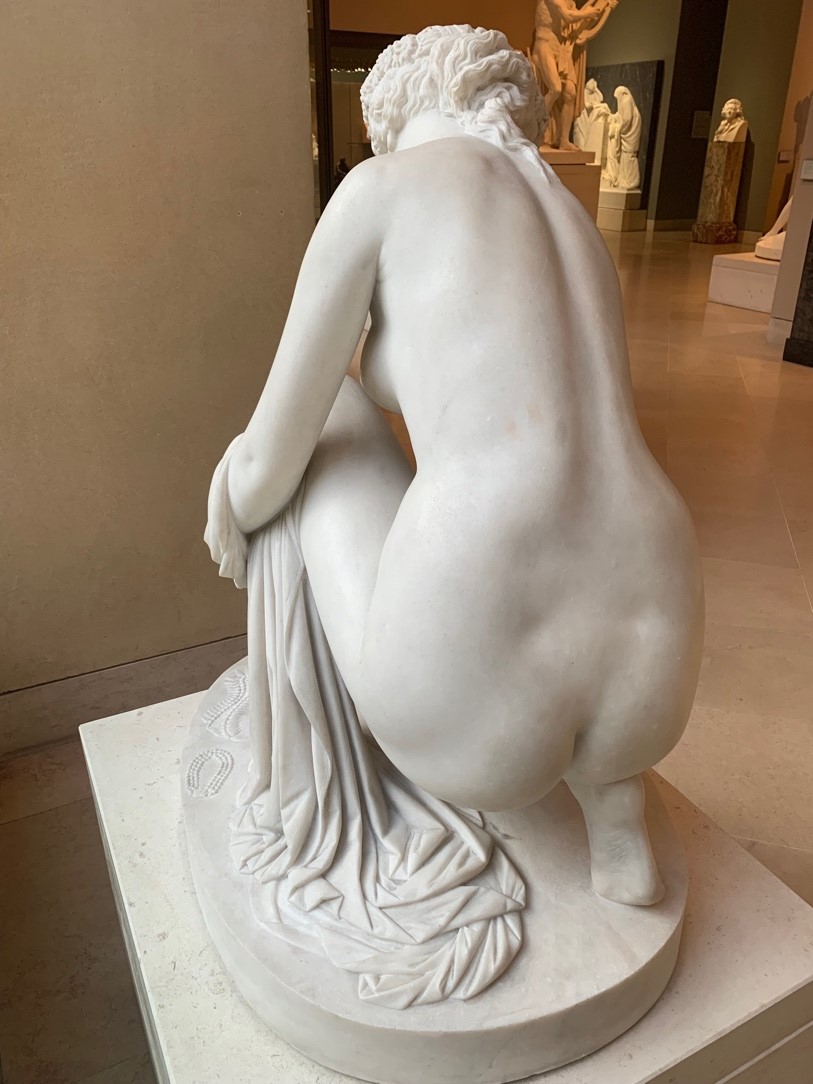

The Toilet of Atalante
My Louvre by Antoine Compagnon

The Toilet of Atalante
Baudelaire didn’t like James Pradier. He cites him in the “Why Sculpture is Boring” chapter of his Salon of 1846: “An excellent proof of the pitiable state of sculpture is the fact that M. Pradier is its king.” The poet nevertheless concedes that Pradier “knows how to do flesh.” That is visibly the case in La Toilette d’Atalante from 1850 (Richelieu, room 225). As she bends down to attach her sandal, the athletic heroine naturally adopts the position of the Venus of Vienne, previously mentioned, who crouches with a little infant hand poised upon her back, sole remnant of the Cupid who once caressed her (Sully, room 344). Baudelaire also wrote of Pradier’s sculptures, “One could undoubtedly trace some of their details to the Museum of Antique sculpture.” He could not have said it better, since this modern Atalante mimics the antique statue discovered at Sainte-Colombe-lèz-Vienne in 1828. In place of Cupid’s hand, Pradier sculpted two dimples on his heroine, a testimony to what Baudelaire called “his particular refinements of the chisel.”